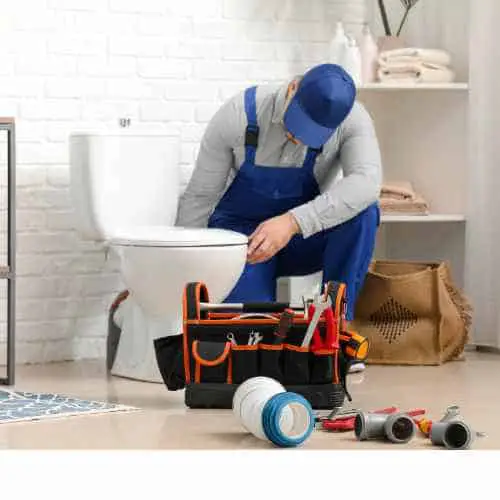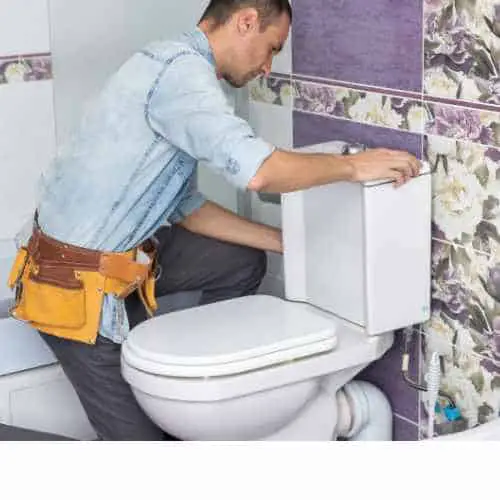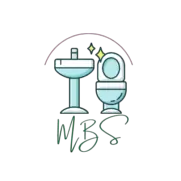If you’ve ever found yourself asking, “Why does my toilet randomly start running?” you’re not alone. This is a common issue in many homes, one that can be rather perplexing, especially in the silent hours of the night.
The sporadic gushes of water can not only be disruptive but can also lead to water wastage—an issue we all need to be more mindful of. The factors causing this random behavior vary from simple problems that you can solve with a few DIY steps, to more complex issues requiring professional help.
In this blog post, we aim to demystify the question, “Why does my toilet randomly start running?” and provide practical solutions. From understanding how your toilet works, to diagnosing the problem, we’re here to guide you through it all. Read on to understand and put an end to this unsettling occurrence.

Understanding the Basics of Toilet Mechanics
To get to the heart of why your toilet might start running at random times, we first need to learn a bit about the basics of toilet mechanics. Don’t worry, it’s not as complex as it sounds!
Imagine your toilet as a water management system. It’s made up of some simple yet ingenious parts working together. Chief among these are the tank, flapper, fill valve, overflow tube, and the bowl.
First up, the tank. Your toilet tank is like a water reservoir. It stores water that is used to flush away waste after you’ve hit the flush lever. Inside the tank, you’ll find the flapper—a rubber component that acts like a door. When you flush, the flapper lifts, letting water rush from the tank into the bowl.
Next, we have the fill valve. Once your tank empties, the fill valve jumps into action. It refills the tank with water for the next flush. As the tank fills, the float attached to the fill valve rises. Once the float reaches a pre-set level, it signals the fill valve to stop filling the tank.
Now, let’s talk about the overflow tube. This little tube ensures the water doesn’t spill out of the tank if the fill valve fails to stop. It directs any excess water safely into the bowl.
Finally, the bowl is where all the waste exits your home. Once the bowl receives the water from the tank through the flapper, it uses the force to send waste out through the sewer line.
Understanding this basic mechanism makes it easier to diagnose issues when something goes wrong. In the end, your toilet is a team of simple components working together towards a common goal: efficient flushing. If one team member slips up, the whole process can start to look like a problem.
Common Reasons Why Your Toilet Might Be Randomly Running
Understanding the ‘why’ behind your toilet’s random running can help you fix it. Let’s explore some of the common reasons that might make your toilet act up:
- Worn Out Flapper: Think of the flapper as a seal. It prevents water in the tank from entering the bowl, except when you flush. However, flappers wear out over time. When this happens, water could slow-leak into the bowl, causing the fill valve to intermittently refill the tank, hence the random running noises.
- Problematic Fill Valve: The fill valve controls the water filling back into the tank after a flush. A malfunctioning or worn-out fill valve can’t properly regulate this, leading to water continually filling the tank and overflowing into the overflow tube.
- Incorrect Float Height: If the float that controls the fill valve is set too high, water keeps filling the tank beyond its capacity. The excess water then drains into the overflow tube, causing your toilet to run continuously until the float is adjusted to the correct level.
- Fill Tube Issues: The fill tube refills the bowl with water after a flush. If the tube is improperly placed or disconnected, the fill cycle might be disrupted, leading to random running.
- Bad Overflow Tube: If the overflow tube is damaged or cracked, water continues to leak into the bowl instead of halting at the pre-set level. The fill valve then tries to compensate by continually filling the tank.
Step-by-Step Guide to Troubleshoot a Running Toilet

No one likes a toilet that randomly starts running—it’s annoying and wastes water. Thankfully, with a bit of know-how, you can troubleshoot the issue. Here’s a simple, step-by-step guide to help you diagnose and possibly fix a running toilet.
Step 1: Inspect the Flapper
Firstly, take the tank lid off and observe. If you notice the water is flowing into the overflow tube, the problem could be with the flapper. The flapper should form a watertight seal with the bottom of the tank. If it’s worn out or damaged, it could allow water to leak into the bowl, making the fill valve work continually. To examine the flapper, turn off the water supply valve, flush your toilet to drain the water, then inspect the flapper for wear and tear. If it’s damaged, you’ll need to replace it.
Step 2: Check the Fill Valve
If the flapper is okay, inspect the fill valve next. Turn on the water supply and watch the fill valve mechanism as the tank refills. If the water doesn’t stop before it reaches the top of the overflow tube, the fill valve might be the culprit. Replacing a fill valve can be a bit more challenging and might require professional help.
Step 3: Evaluate the Float Level
The float controls when to stop the water flow into the tank. If the float is set too high, water can overshoot the overflow tube, causing the toilet to run continually. Adjust the float to a lower level, so the fill valve ceases filling once the water level is about an inch below the top of the overflow tube.
Step 4: Assess the Fill Tube
Ensure the fill tube isn’t inserted too far into the overflow tube. If it is, it can create a siphoning effect that causes your toilet to run. The fill tube should be perched just above the overflow tube.
Step 5: Examine the Overflow Tube
Lastly, check for any cracks or splits in the overflow tube itself. This can lead to water leaking into the bowl, causing a continuously running toilet. If you find any damage, you might need to replace the overflow tube.
Preventive Measures to Avoid Random Toilet Running
Prevention is indeed better than cure, especially when it comes to the issue of a randomly running toilet. While the occasional problem may occur, implementing some preventive measures can drastically reduce the frequency of these annoyances. Let’s dive in:
1. Regular Inspections: Regularly inspect the components of your toilet tank—flapper, fill valve, overflow tube, and fill tube. Looking for wear and tear on these components early can avoid potential issues down the line.
| Components | What to Check |
|---|---|
| Flapper | Check for wear and tear and ensure it forms a tight seal. |
| Fill valve | Make sure it shuts off when the tank is filled. |
| Overflow tube | Check for cracks or splits that could lead to leaks. |
| Fill tube | Ensure it’s not placed too far into the overflow tube. |
2. Replace Old Parts: Parts such as flappers and fill valves have a certain lifespan. Even if they seem fine, consider replacing them every few years as preventative maintenance, especially with older toilet models.
3. Adjust Float Height: Make sure the toilet float is set to the correct height – about an inch below the top of the overflow tube. This prevents excess water from continually flowing into the tube.
4. Use Quality Parts: Whenever you’re replacing parts, ensure you’re installing quality components. Cheap options might feel cost-effective initially, but they often wear out faster, causing more issues in the long run.
5. Professional Help: If you aren’t comfortable doing these inspections and replacements, don’t hesitate to call a professional. Regular maintenance by a plumber could save you from unwanted troubles and random toilet running in the future.
By following these preventive measures, you can likely circumvent the problem of a randomly running toilet. Remember, consistency is key—keeping an eye on these factors can save you from asking, “Why does my toilet randomly start running?” at untimely moments.
Conclusion
Running toilets can seem like a bizarre and annoying mystery, but armed with some essential knowledge about your toilet’s mechanics and common issues, you can potentially diagnose and even resolve this issue. From understanding the role of crucial components, identifying the problems, and stepping through easy fixes, you’re well on your way to handling this.
Prevention is also a key part of the battle, so regular inspections and maintenance are paramount. However, while DIY can fix minor problems, never hesitate to call in the professionals for complex issues to ensure efficiency and longevity.
We hope this guide helped answer the question, “Why does my toilet randomly start running?” and provided you with practical solutions. Happy plumbing!
